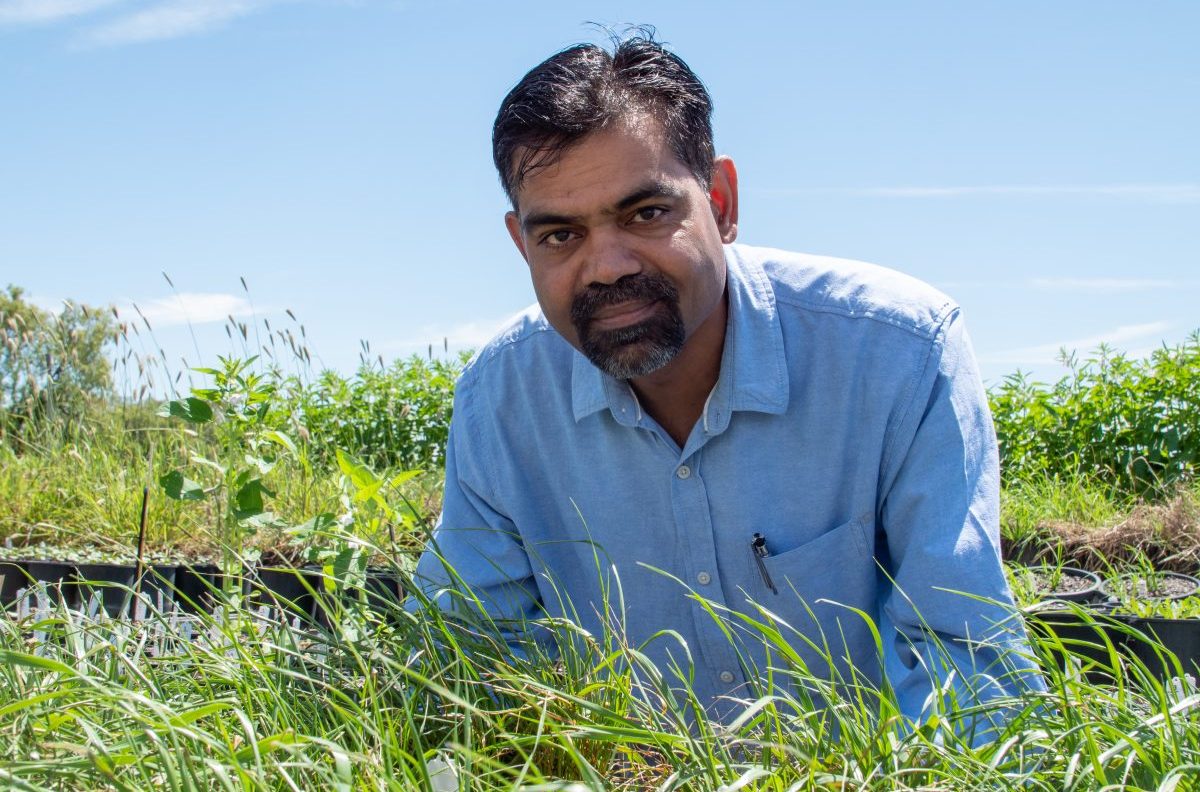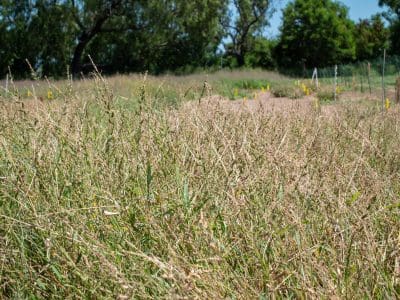
Professor Bhagirath Chauhan in the field at UQ Gatton. Photo: Megan Pope
UNIVERSITY of Queensland-led research has discovered that annual ryegrass is now germinating in summer in northern grain growing regions.
This introduced weed already costs Australian grain growers more than $90M a year.
Queensland Alliance for Agriculture and Food Innovation’s Professor Bhagirath Chauhan said this finding makes the weed a bigger threat than originally thought.
“This adaption is a potential disaster that could cost many millions of dollars across all cropping systems,” Professor Chauhan said.
“Annual ryegrass has mainly been a winter weed in the southern and western regions of Australia, but recently we have seen it in Queensland.
“Not only is it germinating outside of the original winter window, but it is doing so in temperatures as high as 40 degrees and then growing to produce seeds in summer.”
Professor Chauhan said annual ryegrass can spread quickly, often carried accidentally by vehicles or, in one case, by a hale bale which fell from a truck.
“Annual ryegrass can quickly spread from the roadside into a paddock and then grow alongside a crop.
“One ryegrass plant can produce more than 40,000 seeds, which can grow into 40 or 50 plants per square metre.
“Weeds like ryegrass compete for nutrients, water, sunlight and space and can harbour insect pests that will attack a food crop.”
Adding to the problem is the weed’s resistance to most herbicides.

The ryegrass trials at UQ Gatton. Photo: Megan Pope
“Farmers rely on glyphosate to control weeds in fallow areas and ryegrass has developed resistance even to that, which means it will produce seeds that go into the soil’s seed bank and germinate over many seasons.
“The plants will keep growing and costing farmers money every year which is why it is now Australia’s number one problematic weed in grain cropping systems.”
Findings to prompt more study
Professor Chauhan said more research is needed.
“We need to study why this plant is growing outside of its normal window and why it’s happening in Queensland and northern New South Wales.
“We need to learn from the experience of the southern and western grain regions to ensure we don’t get to the point where it’s really difficult to manage.”
The research was published in Weed Technology and enabled through Grains Research and Development Corporation investment.
Source: Queensland Alliance for Agriculture and Food Innovation

HAVE YOUR SAY